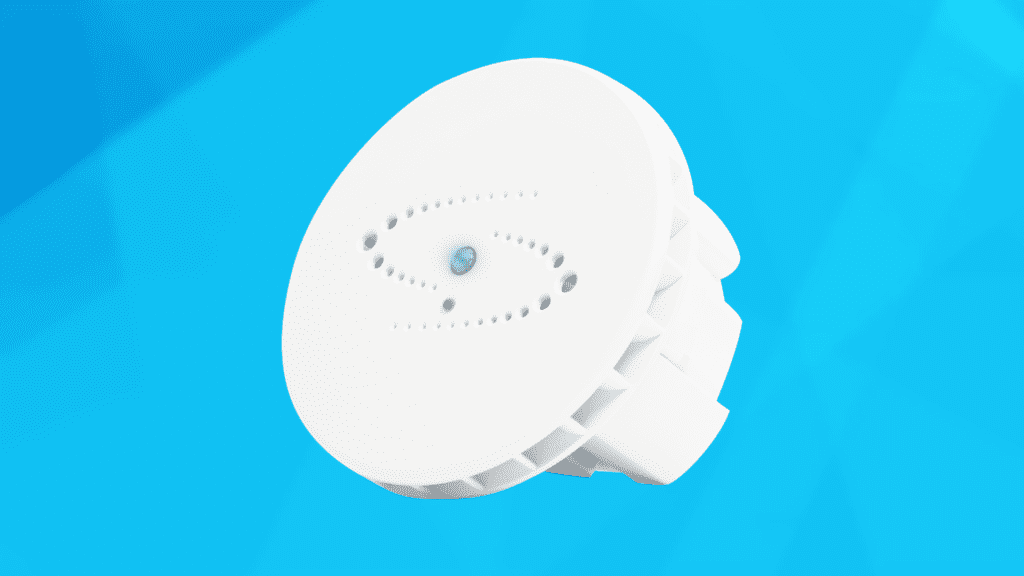Since we began promoting and selling the Halo Smart Sensor in the UK market we have faced questions about its cost, and what added benefits it provides, compared with other vape detectors and smart sensors.
The upfront cost of a Halo smart sensor, manufactured in the US by IPVideo Corporation, may look higher than its rival smart sensors but taking a good look at the features of the products is important so you can properly compare the benefits you will gain.
Vape and THC detection
While we have promoted the Halo Sensor primarily as a vape detector it does far more than this and it can be used for a range of purposes. Even as a vape detector it has the added benefit of also detecting tetrahydrocannabinol (THC) which is found in cannabis but can be an ingredient within some e-cigarettes, although this would be illegal in the UK. Being able to detect THC means you can ensure that your premises or school stays legal.
Beyond vape detection
The HALO smart sensor can also be used to protect the health of people within your building. It will detect a range of gases, particulate matter, barometric pressure, temperature changes, humidity, and volatile organic compounds that could be an indication of the presence of airborne infectious diseases but also can indicate poor indoor air quality.
While the rival smart sensors will detect some aspect of air quality and changes that could be used to manage people’s health no device provides the comprehensive measures that the HALO smart sensor does, meaning it can be used for a range of purposes.
By measuring a range of gases and particles in the air the HALO provides the data for its Health Index and its Air Quality Index. Both of these give facilities managers and others responsible for protecting people within their buildings the ability to make changes to their Heating, ventilation, and air conditioning (HVAC) systems or to take immediate actions such as opening windows. The HALO can also be connected to HVAC systems with a BACnet interface to notify the system to let more air into the room. The Halo Smart Sensor is the only equivalent device that does this.
Dangers of particulate matters
Particulate matter (PM) is a mix of particles and droplets in the air. PM sized 10 micrometres or smaller can be considered to be a risk to health as they can be inhaled but additionally high concentrations can indicate the presence of infectious diseases as viruses are commonly transmitted attached to very fine particulates. The HALO can detect PM levels of 1 μm, 2.5 μm and 10 μm.
Sufficient exposure to PM can irritate the eyes, nose, throat, and lungs, leading to allergy-like symptoms and shortness of breath in otherwise healthy people. It can also exacerbate existing medical problems, such as asthma and heart disease. PM 2.5 is considered the world’s single biggest environmental health risk.
Indoor PM levels can be influenced by outdoor sources like vehicle exhaust, wildfires, and power plant emissions. But many indoor activities produce PM as well: cooking, burning fuel in fireplaces, and smoking are just a few common sources.
Higher Carbon Dioxide levels can also be an indication of an unhealthy indoor space as people naturally breathe out this gas and high concentrations will occur when areas are too crowded and there is poor ventilation.
The effects of high levels of CO2 were long thought to be benign, but research has found that concentrations as low as 1,000 ppm can affect people’s cognitive function and decision-making performance.
Volatile Organic Compounds: Gases from chemicals effecting human health
Additionally, the HALO will monitor volatile organic compounds (VOC), which are gases emitted from a variety of materials that can have short- and long-term health effects. Concentrations of many VOCs can be up to 10 times higher indoors than outdoors. including cleaning fluids, disinfectants, paints, and varnishes. Burning fuels like wood and natural gas also produce VOCs.
Short-term exposure to low levels of VOCs can cause throat irritation, nausea, fatigue, and other minor complaints. Long-term exposure to high concentrations of VOCs has been linked to more severe respiratory irritation as well as liver and kidney damage. Products can emit VOCs even when they’re in storage, though to a lesser extent than when they’re actively being used.
The HALO smart sensor also monitors nitrogen dioxide, which is a gas that occurs naturally but can be increased by human activity and carbon monoxide which is contained in tobacco smoke and can be given off by fuel-burning appliances. High concentrations of carbon monoxide can be deadly while low levels can also cause adverse reactions, including confusion and memory loss.
Aggression detection and cries for help
The HALO smart sensor is the only one of the smart sensors on the market that comes preloaded with five spoken keyword phrases. These keywords can be used by anyone in times of stress or need. This is especially helpful in schools where bullying is a problem, for teachers who are in need of assistance, in hospitals and caring homes for staff and patients, and in hotel bedrooms. Whenever the keyword is said aloud, HALO will send notifications to those who have been designated to receive these alerts.
Aggression detection is only available in one other rival device. The HALO does this by learning the signature of abnormal noise in a room by applying machine learning. HALO learns what normal sound levels are and alerts when a threshold above normal is detected for a specified length of time.
The device also has a tamper sensor to prevent vandalism and disabling of the HALO by identifying vibrations caused by striking the HALO, throwing things at it, or even detecting when the ceiling tile HALO is mounted in is being moved.
Integrations and Cloud technology
One of the great advantages of the HALO smart sensor is that it is an open API device meaning it is easy to connect to other software. It can also integrate with other security systems like CCTV, including Avigilon Control Center. We offer a range of security and monitoring systems but where we can we aim to integrate these to give you a better user experience. HALO is the only major vape and health detector that does this.
If you want to have the HALO smart sensor we can also provide HALO cloud, which does incur a subscription charge. However, unlike other devices that have cloud reporting this is not a requirement and the HALO can be provided as a stand-alone device.
So why choose the Halo?
For a slightly higher price than its closest equivalent device you will obtain not just a vape detector, but the most effective vape detector on the market with the added benefit of being able to detect THC, an ingredient of cannabis.
It has the most comprehensive health monitoring of all the smart sensors and has the added benefit of further protecting people through its detecting of abnormal noise levels and picking up keywords which could signal an emergency situation. This allows you to take effective action to protect the health and safety of staff.
If you want to know more about this vape, safety and health smart sensor and learn about the benefits it will bring to you just get in touch we will be delighted to provide a demonstration.



